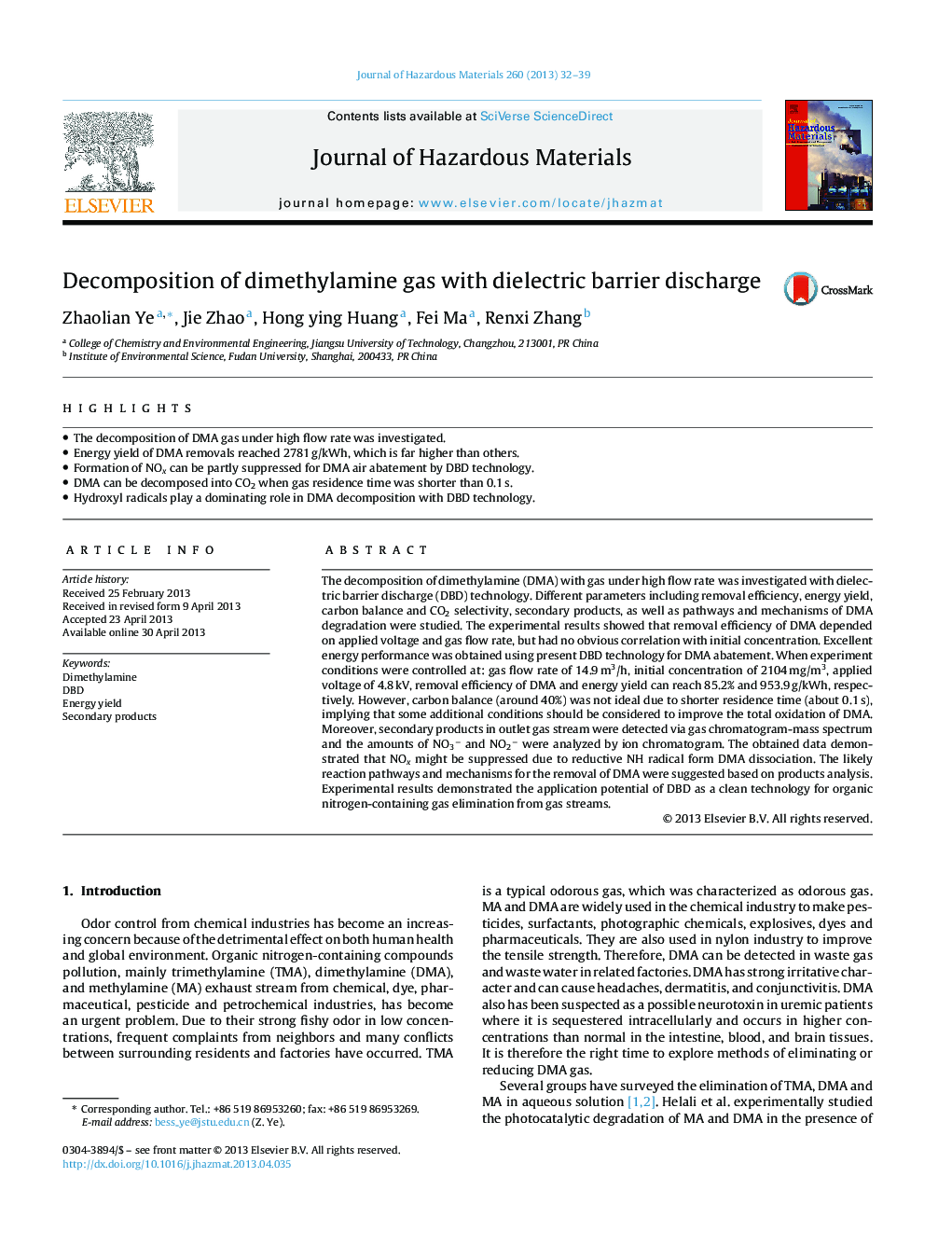| Article ID | Journal | Published Year | Pages | File Type |
|---|---|---|---|---|
| 6972087 | Journal of Hazardous Materials | 2013 | 8 Pages |
Abstract
The decomposition of dimethylamine (DMA) with gas under high flow rate was investigated with dielectric barrier discharge (DBD) technology. Different parameters including removal efficiency, energy yield, carbon balance and CO2 selectivity, secondary products, as well as pathways and mechanisms of DMA degradation were studied. The experimental results showed that removal efficiency of DMA depended on applied voltage and gas flow rate, but had no obvious correlation with initial concentration. Excellent energy performance was obtained using present DBD technology for DMA abatement. When experiment conditions were controlled at: gas flow rate of 14.9Â m3/h, initial concentration of 2104Â mg/m3, applied voltage of 4.8Â kV, removal efficiency of DMA and energy yield can reach 85.2% and 953.9Â g/kWh, respectively. However, carbon balance (around 40%) was not ideal due to shorter residence time (about 0.1Â s), implying that some additional conditions should be considered to improve the total oxidation of DMA. Moreover, secondary products in outlet gas stream were detected via gas chromatogram-mass spectrum and the amounts of NO3â and NO2â were analyzed by ion chromatogram. The obtained data demonstrated that NOx might be suppressed due to reductive NH radical form DMA dissociation. The likely reaction pathways and mechanisms for the removal of DMA were suggested based on products analysis. Experimental results demonstrated the application potential of DBD as a clean technology for organic nitrogen-containing gas elimination from gas streams.
Related Topics
Physical Sciences and Engineering
Chemical Engineering
Chemical Health and Safety
Authors
Zhaolian Ye, Jie Zhao, Hong ying Huang, Fei Ma, Renxi Zhang,
